
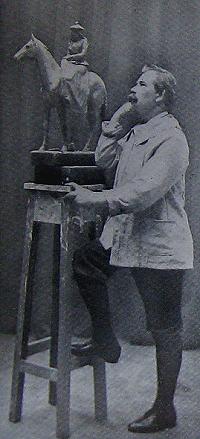
John Cassidy with portrait of a lady [Miss Ottoline Walker] and horse [c. 1901]
Manchester faces and places : an illustrated record of the social, political, and commercial life of the cotton metropolis and its environs was a fascinating journal published in Manchester by John Heywood in Manchester. Vol. . I-XI, 1889-1900 had this title, Vol. XII was Lancashire faces and places; it then continued as simply Faces and places for Vol. . XIII-XVII, 1901-06.
This article is reproduced from the May 1903 issue, No. 6 in Vol.2 of the 'New series' which was also Vol.14 of the 'Old Series.' While not adding a great deal to our knowledge of Cassidy's life, it does include pictures of some works not published elsewhere, and we include them all here.
See also: the biography in an 1898 issue of the same journal.
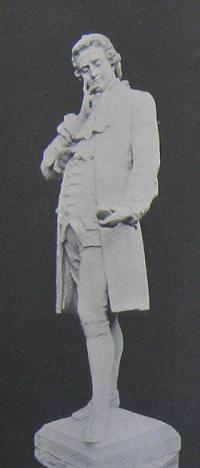
Edward Colston
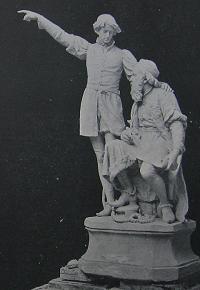
John and Sebastian
Cabot
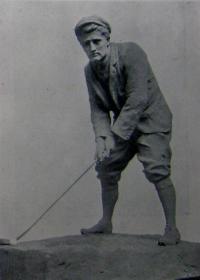
H.H. Hilton, Esq.,
amateur champion, 1900-01 [1902]
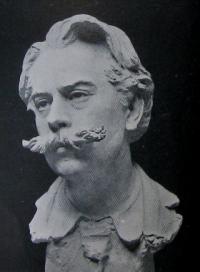
Mr. Haydon Perry
[1902]
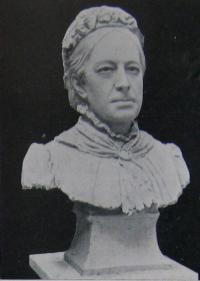
Mrs Christie
Website created and compiled by Charlie Hulme and Lis Nicholson, with the invaluable assistance of the John Cassidy Committee, Slane Historical Society.
Comments and contributions welcome:
charlie@johncassidy.org.uk
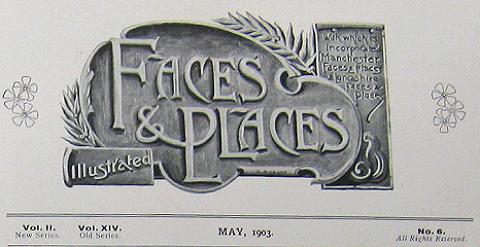
In the Forefront: Mr John Cassidy
On a recent visit to the Lincoln Grove studio, we had the pleasure of inspecting some of the artistic productions of Mr. John Cassidy, one of the most prominent and successful of the younger sculptors in the United Kingdom.
Mr Cassidy's career as a sculptor, has been comparatively brief, but exceptionally brilliant. He is a native of Ireland, having been born in County Meath, not far from the famous "Tara's Hall." Although early showing a disposition for artistic work, he was actually engaged in farming pursuits until he was 21 years of age, having had no opportunity for taking up or cultivating what he felt to be his natural bent. It is about 17 years since he commenced his training in Manchester, where he entered the School of Art, and remained for six years' study. During that time he obtained five National Medals, together with several Queen's prizes, and two National prizes, taking these in two successive years - 1885 and 1886.
During his student days he made a speciality of modelling and sculpture, and became so expert in this department that he was appointed by the Commissioners of the Royal Jubilee Exhibition in Manchester in 1887 to make portrait sketches of heads from life, in the exhibition buildings. The exhibition was open for six months, and during that period he produced no fewer than 185 portrait busts, as well as several medallions and some decorative panels, all modelled in clay. With the practice he had at this time his manipulation became so rapid that he would get a likeness in half-an-hour, and between 9,000 and 10,000 people visited his studio to watch him modelling every day. The result of this was that he got a number of commissions and took and extensive studio in Manchester, in the heart of the city, where he executed busts, in marble and bronze, of nearly all the celebrities of Manchester.
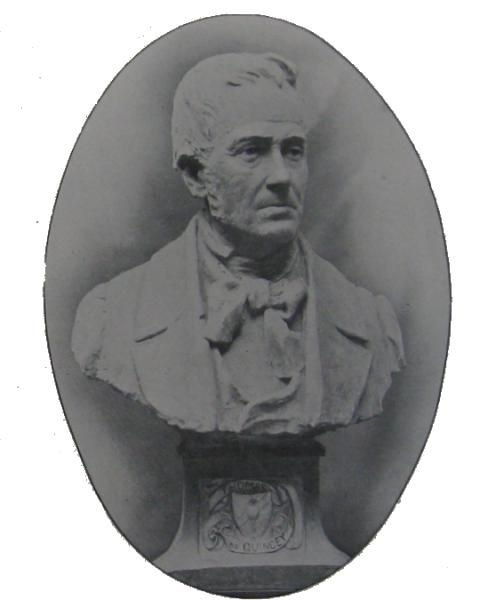
Thomas de Quincey - title
page of the issue [1900]
After spending three years in this work, Mr Cassidy went to Paris for a time to get further study and bring himself up to date in the new methods and ideas in the work of the sculptor. On returning to Manchester he took a studio in the suburbs, and received an important commission for a number of statues for the John Rylands Library. The figures executed in this commission were allegorical, but one was a portrait in marble of the late John Rylands.
Shortly after, there was a competition for a monument to commemorate Edward Colston, the great benefactor of Bristol. The competition was open to the whole of Great Britain, and 32 designs were sent in. Mr. Cassidy's was accepted, and was executed in bronze. The figure of Edward Colston is 9 feet 6 inches in height, and there are four large panels of figure subjects around the base, with a bronze dolphin at each of the four corners. Mr. Cassidy's next important commission was an elaborate statue of Her Majesty, the late Queen Victoria, to be erected in front of the Royal Jubilee Schools in Belfast, in commemoration of the Diamond Jubilee. This statue, which is of the finest Portland Stone, is upwards of 9ft 6 ins. in height, and represents our late Queen standing, crowned, and holding in her right hand an olive branch, "offering peace to to the people of Ireland," and in her left a sceptre. This, we understand, was the first statue of our late Queen to be erected in Ireland.
For the Public Park, Bolton, Mr, Cassidy executed an admirable statue of the late Dr. Dorrian, a well-known local physician and philanthropist. Bolton also possesses a colossal bronze statue of the late Sir Benjamin Dobson, by Mr. Cassidy; and for Aberdeen Corporation he designed the model of a figure of "Hygeia," which has since been reproduced in granite.
One of the most successful of Mr. Cassidy's efforts is the life-like statue of the late Ben Brierley now in Queen's Park. The statue is of white Portland Stone, and represents "Owd Ben" in a characteristic attitude, with the left arm raised and the right hanging by his side. He holds in his left hand the manuscript from which he is reading, and his right hand rests on some papers placed upon a pedestal. The figure is full of dignity and strength, and the sculptor has been singularly successful in producing a simple and natural portrait of the man, which appears all the more credible when it is remembered that he had to work entirely from photographs,having only once casually met the Lancashire writer.
That Mr. Cassidy is a strenuous and facile worker is shewn by the fact that during the time he was engaged upon the important works we have mentioned, he was a regular exhibitor at the London Exhibitions, and in the New Gallery he secured the place of honour three times in succession.
His study of "A Digger," representing a stalwart labourer on the Ship Canal works, eventually found a place in the City Art Gallery, to which has also been added the fine bronze "terminal" portrait bust of Mr. Henry Clarence Whaite, P.R.C.A., R.W.S., the well-known artist. The bust was exhibited in the New Gallery in London, where also the impressive composition representing "John and Sebastian Cabot" was shewn.
Through the courtesy of Mr. Cassidy we are enabled to give several photographic reproductions of work executed by him, together with a photograph of the artists at work upon a beautiful study of a lady and horse.
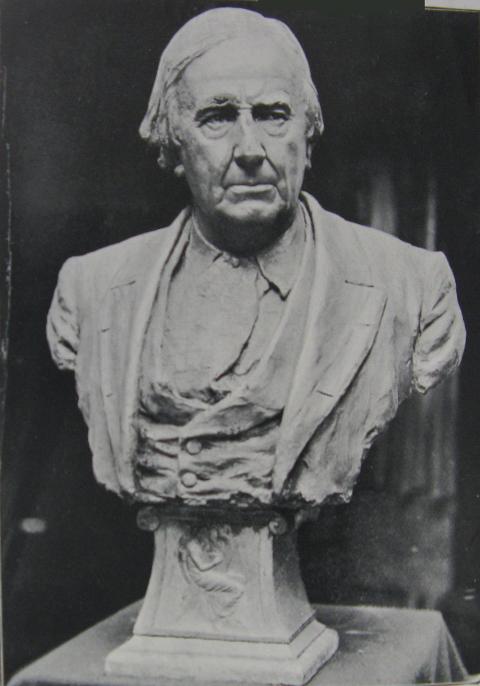
'The late Sir Charles Hallé, from a bronze bust now in the possession of Mrs Rylands, Longford Hall.' [Actually a picture of the clay or plaster model. a full-page plate in the original.]
Transcribed by Charlie Hulme, August 2011. With thanks to Manchester Local Studies Library.